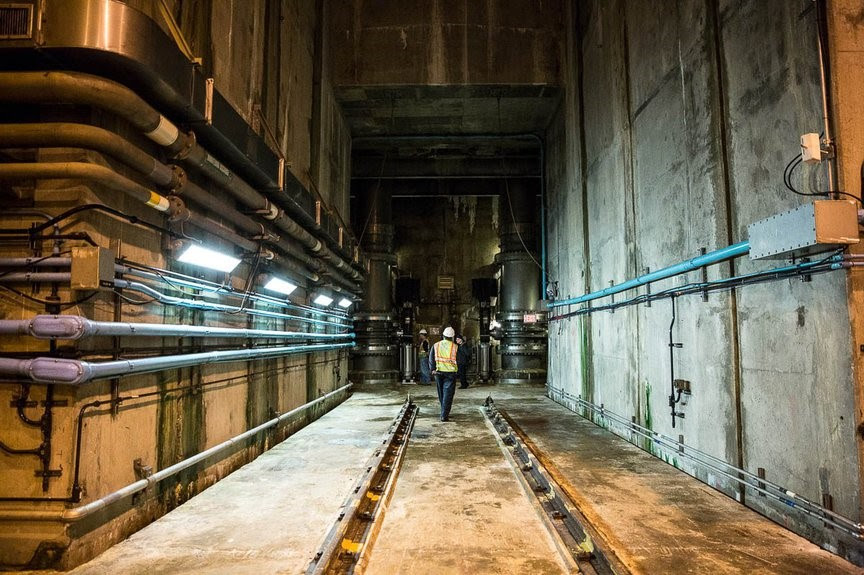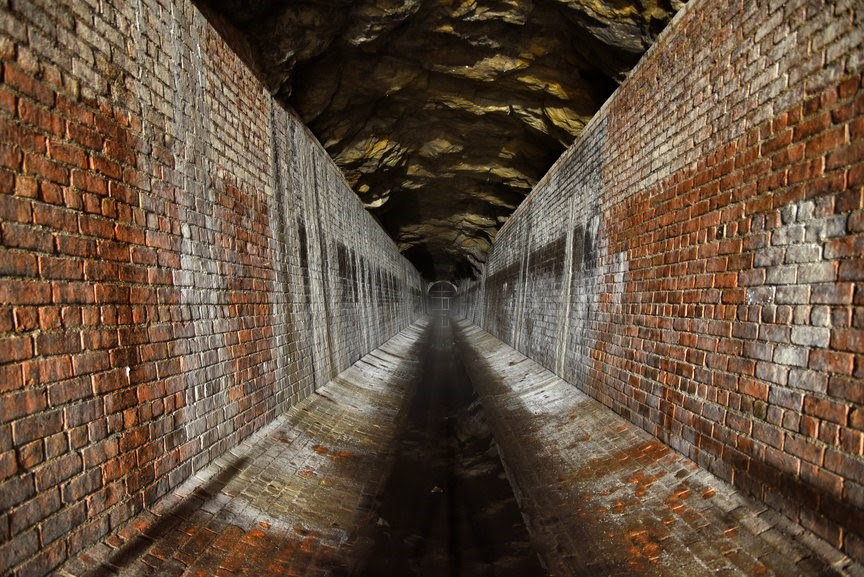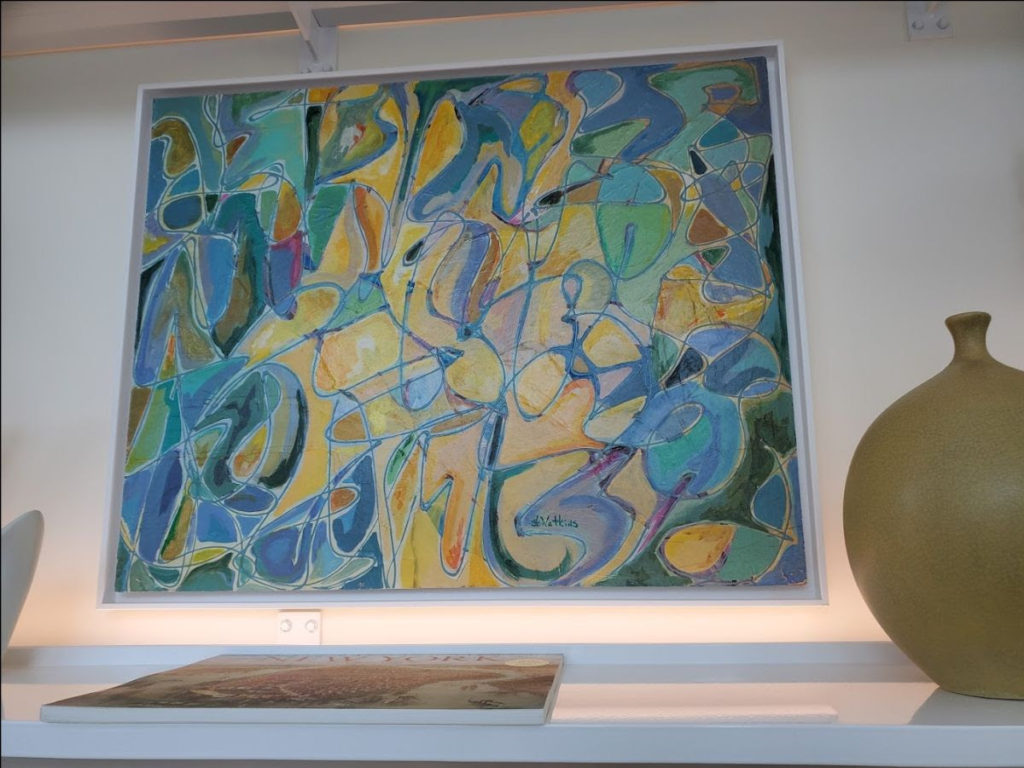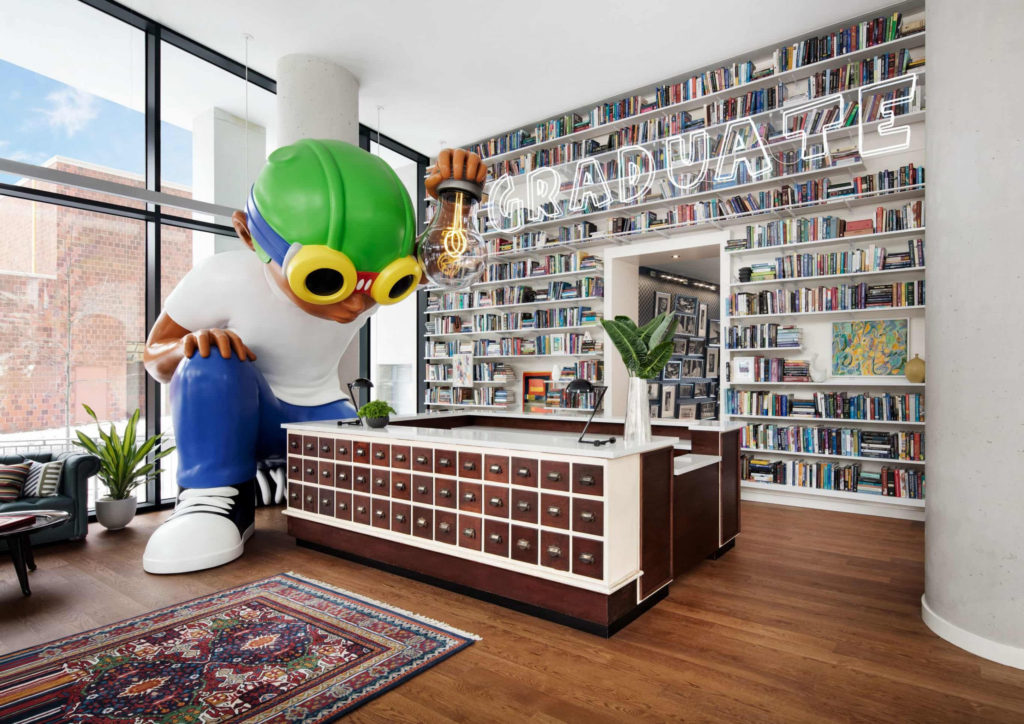Friday, June 4, 2021 – There are lots of tunnels under this island


FRIDAY, JUNE 4, 2021
The
381st Edition
Swiss Cheese Island:
Tunnels under Roosevelt Island
Stephen Blank

We’re all familiar with at least one tunnel under our Island – our slightly falling down F train tunnel, formerly known as the 63rd St tunnel.
This tunnel is more than it appears. And there are other tunnels, too. So let’s escalator down and see what we can find. Several other tunnels run under our feet. It’s a wonder that buildings don’t shake given the amount of underground traffic.
A word before we descend. It would take a much finer mind to track the changes, re-routing, start-ups and halts of the New York subway system over the past century – even just the small section of it that crosses under our Island. So I have focused on tunnels, not on the system as a whole, or even the Queens segments. If you find errors, they are probably the fault of someone else.
60th Street Tunnel
This tunnel under Roosevelt Island is more than a century old. The 60th Street Tunnel carries the N,R and W trains under Roosevelt Island between Manhattan and Queens. It was part of the great expansion of the subway system in the early 20th century, building on contracts between the city and private companies. The original plan put the subways over the Queensboro Bridge, but investigation found that the bridge would be unable to handle the additional weight of the trains. So the tunnel was constructed under our Island just north of the bridge. It opened to revenue service on Sunday, August 1, 1920, at 2 a.m. along with the rest of the BMT Broadway Line. Regular service began the following day. The new tunnel allowed passengers to make an 18-mile trip from Coney Island, through Manhattan, to Queens for a 5 cent fare.

60th Street Tunnel entrance from rooftop, JetBlue HQ, 27-01 Queens Plaza, Street Pinterest
Perhaps of interest to aficionados: The 60th Street tunnel from Queens to Manhattan contains the steepest grade of any tunnel under the East River. The N/W platform at Queens Plaza is an elevated station. When a train leaves, it has to go from the height of the station down to the river bed level and then back up to the level of the Lexington Ave & 60th St station. It is not uncommon for trains to accelerate from 0 to 60mph down this slope. Don’t say I never come up with new intel.
53rd Street Tunnel
This one is almost as old. Construction began on the two tubes of the 53rd Street Tunnel under the East River in spring 1927, and were fully excavated between Queens and Manhattan in January 1929, with a ventilation shaft built on then Welfare Island. The Queens Boulevard Line was one of the original lines of the city-owned Independent Subway System (IND), planned to stretch between the IND Eighth Avenue Line in Manhattan and 178th Street and Hillside Avenue in Jamaica, Queens. The tunnel crosses the island just south of the Cornell campus. I believe (but am not certain) that the Strecker Memorial Laboratory is a power substation for this line.

A Forgotten Roosevelt Island Subway Entrance?
“No, the above image is not of a forgotten subway station. It is simply a picture of an emergency exit from the 53rd Street subway tunnel that is beneath Roosevelt Island.” http://rooseveltisland360.blogspot.com/2007/12/forgotten-roosevelt-island-subway.html
And a little extra: The 60th Street Tunnel Connection
This is a short subway line connecting the BMT 60th Street Tunnel with the IND Queens Boulevard Line west of Queens Plaza. The 11th Street Connection name comes from the street above the split from the 60th Street Tunnel. The line has no stations, and carries R trains at all times but late nights.
Now the one we know best, the 63rd Street Tunnel
The newest of the East River tunnels, and the newest rail river crossing in the New York metro area. In February 1963, the New York City Transit Authority proposed a two-track East River subway tunnel under 76th Street with unspecified connections to the rest of the transit network. The proposed site of the tunnel was switched to 59th Street and then shortly after, Mayor Wagner suggested that a tunnel around 61st Street “be built with all deliberate speed”. This was approved by the City Board of Estimates, but then the site was changed once again to 63rd Street because Rockefeller Institute people feared that heavy construction and later train movements so close to the Institute’s buildings might disturb delicate instruments and affect the accuracy of their research.
Construction began in 1969, and the tunnel was holed through beneath Roosevelt Island in 1972. The expectation of this connection helped make our Roosevelt Island project feasible, given the lack of other access to Manhattan. Completion of the tunnel and its connections was delayed by the 1975 New York City fiscal crisis – which led to the “short term fix”, our Aerial Tramway. The subway was finally opened in 1989 – and called the “tunnel to nowhere” because its Queens end did not connect to any other subway line until another short connector was finished in 2001.

Ventilation structure on Roosevelt Island
But there’s much more to this: East Side Access
East Side Access is a megaproject that connects the LIRR to Grand Central, giving Long Island commuters the option to travel directly to East Midtown, reducing congestion at Penn Station. The project is the first expansion of the LIRR in over a century and it is expected that over half of Penn Station’s peak traffic will be diverted to the new 8-track terminal under Grand Central.
How does this involve us? The LIRR tunnel is the bottom half of our 63rd Street tunnel. Same tunnel. The basic East Side Access plan dates to the 1950s, but nothing happened, except the construction of our 63rd St tunnel. Plans for the LIRR connection were revived in the late 1990s. The project received federal funding in 2006, and construction began the following year. The tunnels on the Manhattan side were dug from 2007 to 2011, and the connecting tunnels on the Queens side were completed in 2012.
Major construction is complete. The 15-year long, $11 billion terminal and concourse is seven stories underground, and will allow Long Island Rail Road trains to pull into Grand Central Terminal and shave up to 40 minutes off commutes into Manhattan. Crews are now doing the finishing touches on the station, and Governor Cuomo promised it will open to the public sometime next year, carrying Long Islanders under our Island.

Water Tunnel No. 3
New and Old. Inside new Shaft 13B of City Tunnel No. 3, 2013 TOD SEELIE FOR GOTHAMIST Inside the old Croton Aqueduct, July 31st, 2017 NATHAN KENSINGER FOR GOTHAMIST
But still more. The biggest, deepest and most expensive tunnel under the Island doesn’t carry subways. Rather, water.
New York City Water Tunnel No. 3 is the largest capital construction project in New York City history, conveying water from the Croton Reservoir into Manhattan, Brooklyn and Queens. It’s more than 60 miles long, travels 500 feet below street level in sections, and costs over $6 billion. It serves as a backup to Water Tunnel No. 1, completed in 1917, and Water Tunnel No. 2, completed in 1936. Roosevelt Island is the key point where the eastward spur of the tunnel coming from Manhattan branches off to Queens. The Manhattan section is complete, but the spur eastward depends on finishing three shafts built to hold chambers with valves and flowmeters to direct, control and measure the flow of water in sections of the tunnel. Shaft 15B, under Roosevelt Island, between Jack McManus Field and The Octagon, is the last before water can flow into Astoria and beyond.
FRIDAY PHOTO OF THE DAY
SEND YOUR SUBMISSION
TO ROOSEVELTISLANDHISTORY@GMAIL.COM

THURSDAY PHOTO OF THE DAY
Wonderful mid-century modern painting
signed H. Watkins
at the reception desk at Graduate Hotel.
Text by Judith Berdy
Thanks to Bobbie Slonevsky for her dedication to Blackwell’s Almanac and the RIHS
Thanks to Deborah Dorff for maintaining our website
Edited by Melanie Colter and Deborah Dorff
All image are copyrighted (c) Roosevelt Island Historical Society unless otherwise indicated
Stephen Blank
RIHS
June 1, 2021
Sources
Wikipedia
https://www.nycurbanism.com/east-side-access
https://reckoner165.medium.com/trains-gradients-in-the-nyc-subway-ff2248d920f8
FUNDING PROVIDED BY ROOSEVELT ISLAND OPERATING CORPORATION PUBLIC PURPOSE GRANTS CITY COUNCIL REPRESENTATIVE BEN KALLOS DISCRETIONARY FUNDING THRU DYCD


Copyright © 2021 Roosevelt Island Historical Society, All rights reserved.Our mailing address is:
rooseveltislandhistory@gmail.com





Leave a comment